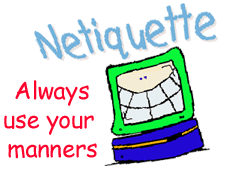Ah, Ergonomics. It's seems like a topic we love to hate. We sitting on the couch, laying on the bed, and we grab our laptop and relax. Our back is in proper alignment, and most of the time sitting at the desk, we resemble this cartoon figure: all slocuhed over.
Ergonomics is about maintaing neutral body posture while sitting at your desk or workstation. Your joints should be in natural alignment, meaning your ears, shoulders and hips should be aligned. Also, your elbow, wrist and back of your middle fingers should be in alignment. There are 3 basic goals for proper alignment and ergonomics:
1. Use larger muscle groups: it reduces stress on the smaller muscles and tendons.
2. Maintain the neutral positon of your wrist.
3. Maintain the neutral body posture: No slouching!
Be sure to set the height, swivel and other features of the chair to reduce the risk of fatigue and neck and back pain. A good rule of thumb while sitting in your chair is that knees and hips should be about the same height.
Your weight should be evenly distributed on the chair. If the seat is too high or too low, unwanted pressure is put on your body. Your shoulders should stay relaxed and your elbow should fall naturally on the chair, with or without arm rests. Always keep your firmly planted on the floor.
The keyboard should sit right in front of you and be as close to you as possible. The top of the monitor screen should be at or slightly below eye level. The monitor should be at least one arm length away.
- Never cradle the phone inbetween your neck and shoulder. I know it seems easy to do, but it will eventually cause neck pain. Use speakerphone or a headset.
- Turn or tilt the monitor. Also, enlarge items on the screen if you cannot see them and adjust contrast and color. Make yourself comfortable.
One interesting thing I learned during this video was the "20/20" rule. I had never heard of this before. Every 20 minutes, give your eyes a break and focus on something else at least 20 feet away.
All of these items are very important in the workplace. Mainly because many of us are young, in our late teens, early 20's, and need to protect our back and our muscles. If we practice good ergonomics now, later, our body will thank us for it. If we plan on working in a business envirnoment in an office setting for most of our lives, we need to start practicing this right, now, to avoid injury later.
A good web site I found on ergonomics is listed below:
I think a topic so often passed by is the topic of ergonomics with other aspects like heavy bookbags, cell phones and playing video games. This site talks about ways to take care of our backs early and some do's and don'ts. One items that stands out to me is the heavy bookbags. So often on campus I see students waltzing around campus with these HUGE bookbags overloaded with textbooks and binders. According to the web site, there are alternatives. Like the book bags on wheels. This will help reduce stress on the back and save yourself permanet injury down the road.










